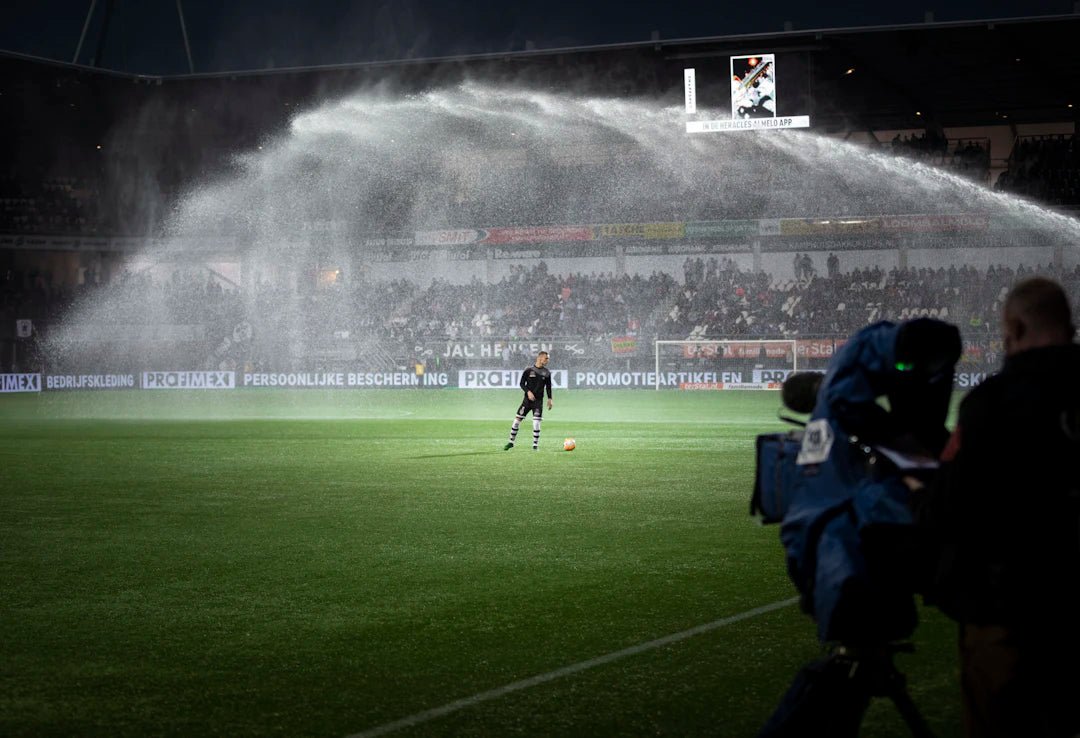
The Green Game: Understanding the Environmental Impact of Sports Facilities
Share
As athletes take to the field or court, oftentimes the spotlight shines on their performance and achievements, but what about the arena that hosts their talent? Sports facilities are not just venues for athletic excellence; they also carry significant environmental footprints. This article explores the various ways sports facilities impact our environment, delving into their energy consumption, waste management, and water usage challenges. More importantly, we will discuss initiatives that sports venues can adopt for sustainability, including innovations like adjustable sport hoops that could make a difference. Let's dive deeper into how we can foster a green revolution in sports.
The Energy Footprint of Sports Facilities
Sports facilities consume enormous amounts of energy, particularly during peak operational hours. Numerous factors contribute to this energy consumption, such as lighting, heating, cooling, and the energy needed for sporting events as well as the operation of additional amenities. In fact, studies show that a single sports stadium can consume an equivalent of the energy used by hundreds of homes.
Lighting: A Bright Idea or an Energy Drain?
One of the primary challenges of energy use in sports facilities is lighting. Traditional lighting systems often consume massive amounts of electricity, especially during events. However, the advent of LED technology offers a promising solution. Not only are LEDs more energy-efficient, but they also enhance the viewing experience for spectators, reducing the overall carbon footprint of events.
HVAC Systems: Keeping it Cool or Heating Up the Planet?
Heating, ventilation, and air conditioning (HVAC) systems are critical in maintaining comfort levels in arenas, particularly in climates with extreme temperatures. However, outdated HVAC systems can be energy hogs. Implementing energy-efficient systems can significantly reduce energy costs and lessen environmental impact. Facilities can also consider incorporating green roofs or natural ventilation techniques to minimize reliance on these systems.
Waste Management: The Lifecycle of Sports Events
Every sporting event creates waste. From food packaging to plastic water bottles, the amount can be staggering. The challenge lies not just in managing this waste, but in implementing strategies to minimize it.
Recycling and Composting Initiatives
Effective waste management starts with recycling. Many sports venues are now adopting comprehensive recycling programs, encouraging fans to separate recyclables from waste. Composting food scraps and biodegradable materials is another step many facilities can take to divert waste from landfills, turning waste into a resource for local gardens and farms.
Reducing Single-Use Plastics
Another effective strategy is to eliminate single-use plastics. Many sports facilities have transitioned to offering refillable water stations instead of selling bottled water. Such initiatives can lead to a considerable decrease in plastic waste while also promoting sustainable habits among fans. Encouraging the use of personal fan gear, like reusable bags and containers, further supports this movement.
Water Usage: The Hidden Cost of Sports Facilities
In addition to energy and waste, water consumption represents a significant environmental concern for sports facilities. Maintaining lush green fields, ensuring player and spectator comfort, and operating sanitation facilities all require considerable water resources.
Smart Irrigation Systems
Smart irrigation technology is a game changer for outdoor sports venues. These systems use weather data and moisture sensors to optimize water usage, reducing waste while ensuring that the fields remain in top condition. Implementing greywater recycling systems can also help in reusing water from sinks and showers in restrooms for irrigation.
Water-Efficient Fixtures
Updating plumbing fixtures to low-flow toilets and faucets can drastically reduce water utilization. Furthermore, educating fans about the importance of conserving water can create a culture of sustainability that extends beyond the stadium.
Community Engagement: Harnessing the Power of Sports
Sports facilities are community hubs. Engaging the community is vital in fostering a sustainable environment. By organizing events like clean-up days, educational workshops, and sustainability fairs, facilities can raise awareness and encourage a culture of sustainability.
Partnerships for Positive Change
Collaborating with local environmental organizations can also enhance sustainability efforts. By aligning goals with nonprofit organizations, sports venues can amplify their impact, educate fans, and create lasting changes in the community regarding environmental responsibility.
Innovation in Sustainability: The Future of Sports Facilities
As technology evolves, so too do the potential solutions for improving the environmental performance of sports venues. Innovations that leverage renewable energy resources, such as solar power and wind energy, are increasingly being explored.
Renewable Energy Sources
Installing solar panels can drastically reduce reliance on fossil fuels and lower operating costs. Many facilities that have already embraced solar energy report significant savings on their energy bills. Wind energy seems to be gaining traction as well, especially in areas with high wind potential.
Building Certifications and Sustainability Standards
Many sports facilities are seeking certifications for sustainability, such as LEED (Leadership in Energy and Environmental Design) accreditation. This not only demonstrates a commitment to reducing the environmental impact, but also helps attract environmentally-conscious fans and sponsors.
Become Part of the Green Sports Movement
Every individual has a role to play in boosting green initiatives within sports. Fans can support teams and venues that demonstrate a commitment to sustainability, advocate for eco-friendly practices, and reduce their carbon footprints. Simply using adjustable sport hoops and reusable gear can serve as a significant step toward fostering sustainable sporting practices.
A Call to Action
Now that we’ve explored the multi-faceted environmental impact of sports facilities, it’s essential to emphasize that this is not just a challenge for facility managers. It’s an opportunity for everyone involved in the sporting world - from athletes and attendees to sponsors. Taking action toward sustainability can lead to a greener future and a healthier planet.
By making informed choices and advocating for change at the grassroots level, we can help transform the sporting community into a thriving example of sustainability that resonates beyond the arena. Remember, every small action contributes to the bigger picture. Let’s champion sustainability in sports and ensure that upcoming generations can continue to enjoy our beloved pastimes without compromising the health of our planet.
